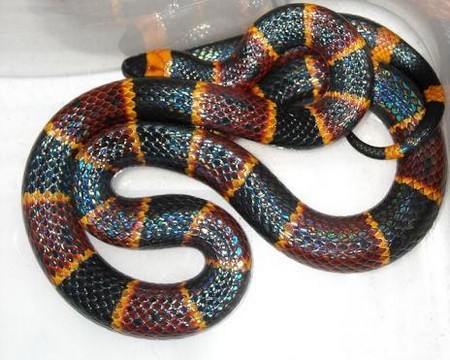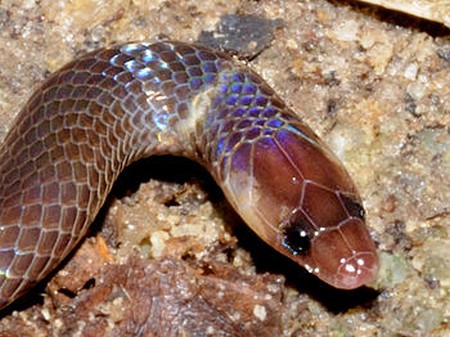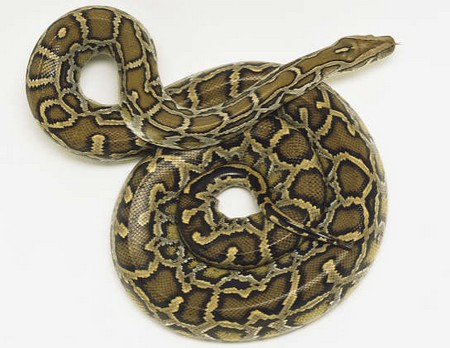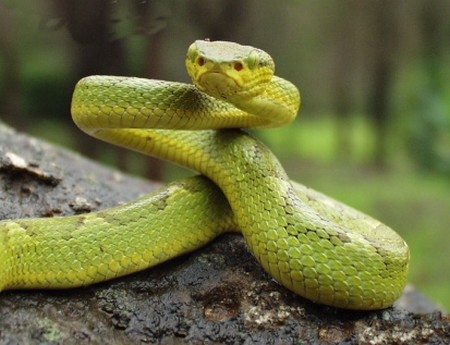According to some myths, snakes are considered as the first reptiles on the Earth. Snakes are always known for their mythological importance. The most common snake is called as ‘snake’ while mythological snake are known as ‘serpent’. The word serpent is originated from ‘Old French’, means ‘to creep’.
Snakes have a glossy skin, forked tongues and each species of snake has its own varied ways of capturing and killing its prey. They exist in many colors, having different colorful patterns on their skins. At present, there are over 2,500 to 3,000 known species of snakes in the world. We can assume that there are so many to be discovered yet. Generally, snakes are classified into five major families which are: Colubridae, Boidae, Elapidae, Viperidae and Hydrophiidae. Most of the species of snakes are not venomous, they in fact use other means and sources to capture or kill their prey. Snakes are fascinating creature for majority of the people because of their mysterious nature.
Although, we don’t have much of the in formation about how these creatures developed during the course of history, the records from the snake skeleton found in the Sahara Desert shows that snakes have lived in this world for million of years. There is a thought that probably the snakes appeared during the time of dinosaurs.
Acrochordidae (File Snakes)
File snakes are also known as wart snakes. These snakes are found in the rivers and the coastal areas of the South Pacific islands, Northern Australia and Southern Asia. Out of the total known species, three species make up this family. Normally, these snakes grow up to 8 feet in length with stout body and wrinkled skin. These snakes are hunted mostly for their leather like skin.
Aniliidae (The Pipe Snake)
The pipe snake is found in South America and is the only variety that builds this family. It is a burrowing snake with stout body. The pipe snake grows to the length of 90 cm.
Atractaspididae (Burrowing Asps)
Burrowing asps are also known as stiletto snakes. There are 55 species of snakes that make up this family. Burrowing asps are found in the Middle East and Africa and are venomous. They live on reptiles and burrowing animals.
Boidae (Boids)
This family includes 70 species of the snakes in which boa species and the python species are most prominent. These snakes are commonly found in subtropical and tropical region. It is a smaller species of snakes including royal python and the ball python. They are non-venomous and have external vestiges of hind legs. They are known to be powerful constrictors and used this ability to capture and kill their prey.
Colubridae (Colubrids)
This family of snake constitutes the two-third of the species of snakes in the world. 1,800 species of snakes are part of this family. These are found on trees, land, water and underground. All these species vary in their appearance and way of life. These are some harmless snakes such as North American garter snakes and the rat snakes, while some venomous and rear fanged snakes such as the African bird snakes and the boomslangs that are dangerous for humans.
Elapidae (Elapids)
This family of snakes includes 250 species of venomous snakes such as the Australian black snake; taipan; tiger snake and death adder all come under this family. These are found commonly in Australia. Some other types of Elapids include cobras, sea snakes and mambas. Elapids usually have short, non-movable front fangs.
Loxocemidae (The Mexican Burrowing Snake)
The Mexican burrowing snake is the only species in this family. It has a brown color with white belly. It is found in Central America and Mexico. This snake drew life from lizard eggs and turtle and also from reptiles and small mammals.
Pythonidae (Pythons)
Pythons are relatively larger snakes found in Asia, Africa and Australia. One can easily found them in the rainforests to dry shrubs. Majority of the pythons live on the ground, however there are few species that live in water or on trees. They live on the warm blooded animals for their survival.
Typhlopidae (Blind Snakes)
This family of snakes lives in subtropical and tropical regions and hides under the ground. Few species of this family grow to the length of 3 feet. The eyes of blind snakes are covered by the head scales. Blind snakes resemble the earthworms in appearance.
Uropeltidae (Shield-Tailed Snakes)
This family of snakes constitutes 45 species of burrowing snakes. These snakes have a wedge shaped snout, a short blunt tail and smooth scales. There are few snakes with shield-tails which are found in Southern India and Sri Lanka.
Viperidae (Vipers)
These snakes possess long fangs attached to the front part of the upper jaws. Vipers have jaws with rotating feature that enables them to move their fangs forward and backward. Vipers are categorized into two groups, i.e. pit vipers and true vipers. Pit vipers include 100 species of the snakes. The term is used to refer to the pit organs found between nostrils and eyes of these snakes. The snakes come under pit vipers group include water moccasins, North American rattlesnakes and copperheads. True vipers are found in Asia, Africa and Europe. About 50 species make up the true viper’s family. Gaboon viper and European vipers are its major species.
Xenopeltidae (Sunbeam Snakes)
Sunbeam snakes have highly polished scales that shine in the sunlight. It is the only species in this family, found in Southeastern Asia. These snakes spend most of their day time under the stones, logs or in burrows. They usually come out when the night takes over.
These are the few major types of snakes mentioned above and there are numerous others which cannot be covered in this short article.







